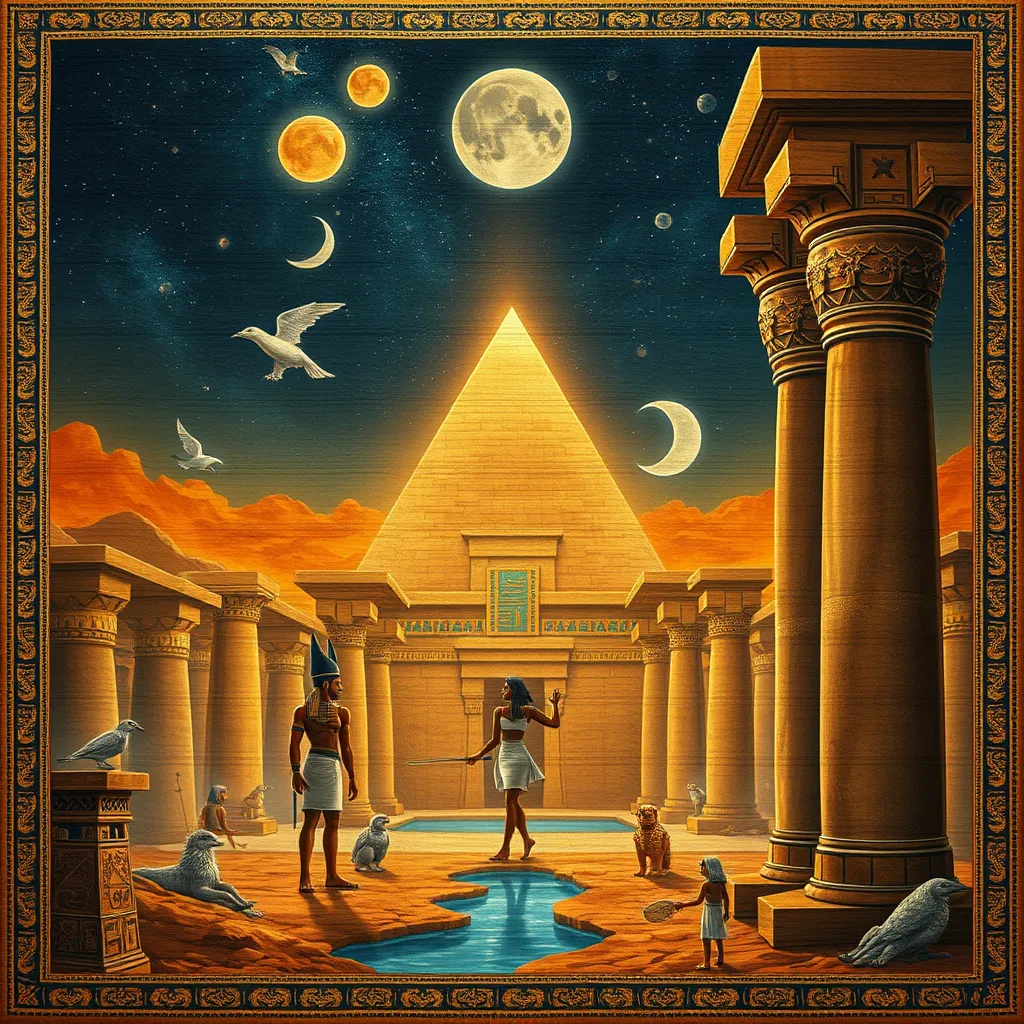The Duat: A Tapestry of Myths and Legends
I. Introduction to the Duat
The Duat, often referred to as the “underworld” or the “realm of the dead” in ancient Egyptian mythology, is a complex and significant element of the Egyptians’ understanding of the afterlife. This mystical realm is not merely a destination for the deceased but a crucial aspect of their beliefs about existence, death, and the afterlife.
In essence, the Duat serves as the transitional space where souls navigate the challenges of the afterlife, guided by deities and their own moral judgments. This article aims to explore the myriad myths and legends surrounding the Duat, offering insights into its significance in ancient Egyptian culture.
II. The Origin of the Duat in Egyptian Cosmology
The origins of the Duat are deeply intertwined with ancient Egyptian creation myths. It is believed that the Duat emerged from the chaos that existed before creation, serving as a counterpart to the world of the living.
- Creation Myths: Various myths depict the Duat as a product of the primordial waters of Nun, from which the first land emerged. This cosmological backdrop set the stage for the afterlife beliefs.
- Connection to the Gods: The Duat is intrinsically linked to the gods, particularly Osiris, who presides over this realm, symbolizing resurrection and eternal life.
- Symbolism: The Duat represents a cycle of death and rebirth, reflecting the Egyptians’ views on life, nature, and the universe.
III. The Geography of the Duat
The Duat is often described as a vast and diverse landscape, filled with mystical realms and daunting challenges. Understanding its geography is essential for comprehending the journey of the soul.
- Landscapes: The Duat includes various terrains, such as deserts, rivers, and lush fields, each representing different aspects of life and death.
- Key Locations:
- Field of Reeds: A paradise where the righteous are rewarded.
- Lake of Fire: A terrifying place where the unworthy face punishment.
- Significance of Geography: The geography of the Duat serves as a metaphor for the soul’s journey, with each location representing stages of judgment, purification, or reward.
IV. The Journey Through the Duat
The journey through the Duat is a central theme in Egyptian mythology, marking the transition from life to the afterlife. This process is fraught with challenges and tests that the soul must navigate.
- The Dying Process: Upon death, a soul enters the Duat, where it faces judgment, often represented by the weighing of the heart against the feather of Ma’at, the goddess of truth.
- Challenges: Souls encounter various obstacles, such as monstrous creatures, treacherous landscapes, and tests of character.
- Role of Deities: Gods like Anubis guide souls, helping them overcome these challenges and assisting them in their journey towards Osiris.
V. Major Deities Associated with the Duat
Several deities play vital roles in the Duat, each contributing to the overarching narrative of the afterlife.
- Osiris: The ruler of the Duat, Osiris symbolizes resurrection and eternal life, presiding over the judgment of souls.
- Anubis: Known as the god of mummification, Anubis guides souls through the Duat, ensuring they are properly prepared for the afterlife.
- Other Deities: Other significant figures include Horus, who represents protection, and Thoth, the god of wisdom who records the outcome of the judgment.
VI. Myths and Legends of the Duat
The Duat is rich with myths and legends that illustrate its significance and the beliefs surrounding it.
- The Story of Osiris, Isis, and Set: This myth narrates the death and resurrection of Osiris, emphasizing themes of betrayal, love, and rebirth.
- Ra’s Nightly Journey: The sun god Ra traverses the Duat each night, battling the serpent Apophis to ensure the sun rises again, symbolizing the struggle between order and chaos.
- Lesser-Known Tales: Various stories feature souls navigating the Duat, encountering deities, and facing moral dilemmas that reflect the ethical beliefs of Egyptian society.
VII. The Duat in Art and Literature
The Duat has been depicted in various forms of art and literature, demonstrating its importance in ancient Egyptian culture.
- Artistic Depictions: Tomb paintings and reliefs frequently illustrate scenes from the Duat, showcasing the journey of the deceased and the presence of deities.
- Literary References: Texts like the Book of the Dead provide guidance for the deceased, detailing rituals and spells intended to assist them on their journey through the Duat.
- Modern Interpretations: Contemporary literature and media often draw upon Duat-related myths, reflecting the timeless fascination with ancient Egyptian beliefs.
VIII. Conclusion: The Legacy of the Duat
The Duat remains a compelling aspect of ancient Egyptian mythology, influencing culture and religion throughout history. Its complex narratives offer profound insights into the Egyptians’ perspectives on life, death, and the afterlife.
As we reflect on the significance of the Duat, it becomes clear that the myths and legends surrounding it continue to resonate with modern audiences, inviting exploration and appreciation of this intricate tapestry of beliefs.




